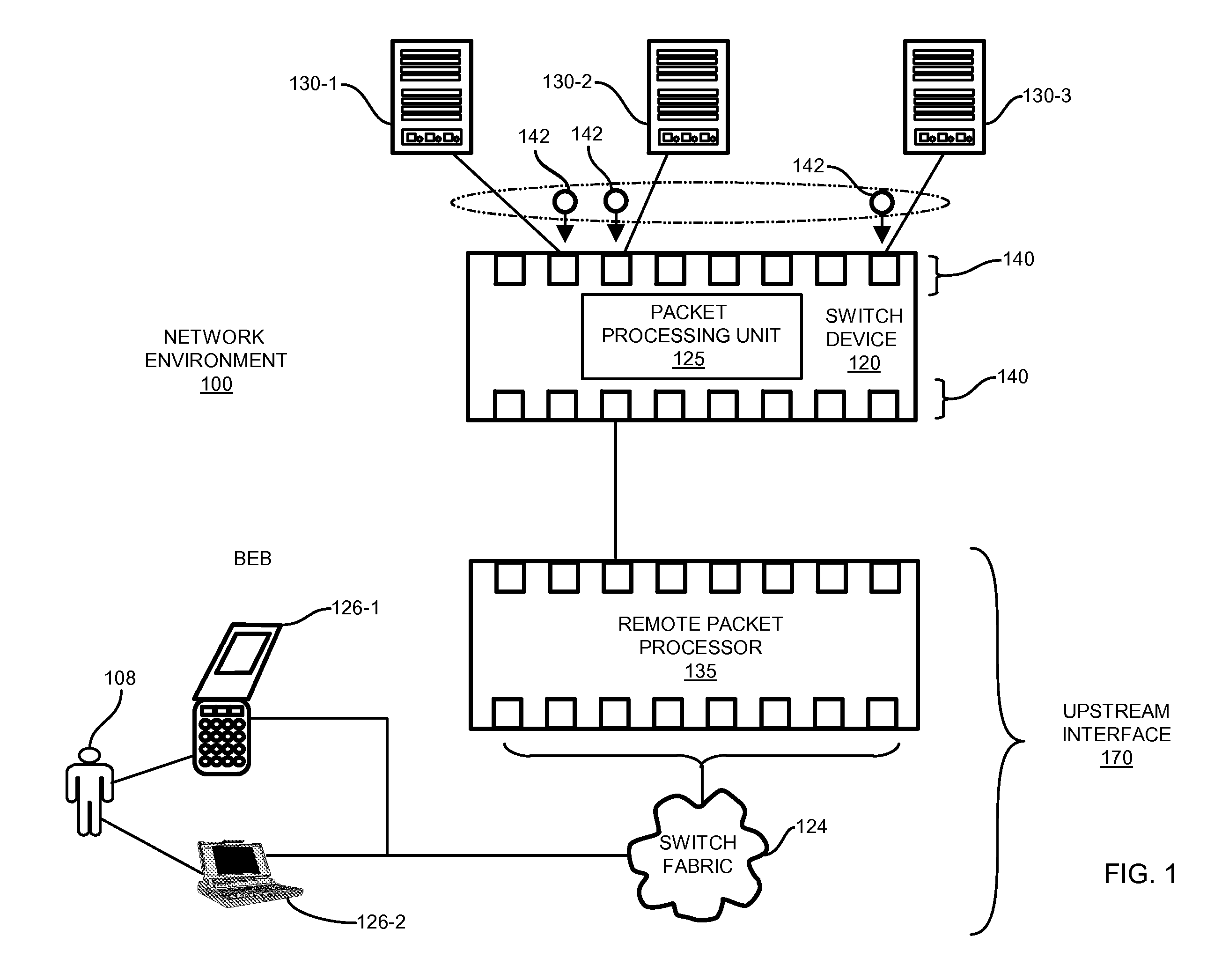IMPLEMENTATION OF A QoS PROCESSING FILTER TO MANAGE UPSTREAM OVER-SUBSCRIPTION
- Summary
- Abstract
- Description
- Claims
- Application Information
AI Technical Summary
Benefits of technology
Problems solved by technology
Method used
Image
Examples
Embodiment Construction
[0039]In a network switching environment, as is typically employed for Internet and other public and private networks, network switching devices (switches) are commonly employed to provide packet switching functions. Such switches are specifically designed to provide local switching based on L2 / L3 forwarding, either within a single device or within multiple devices interconnected via mechanisms such as “HiGig” links as disclosed herein. Network switches typically employ forwarding rules to compute an outgoing port for message traffic (packets) received on an incoming port.
[0040]In a network switch, routing logic is defined by routing, or forwarding rules indicative of ports to which message traffic is to be switched based on control fields in the message. One set of control fields is invokable for specifying a destination module and destination port of a downstream device. Configurations herein are based, in part, on the observation that the control fields in the trunk header may be...
PUM
 Login to View More
Login to View More Abstract
Description
Claims
Application Information
 Login to View More
Login to View More - R&D
- Intellectual Property
- Life Sciences
- Materials
- Tech Scout
- Unparalleled Data Quality
- Higher Quality Content
- 60% Fewer Hallucinations
Browse by: Latest US Patents, China's latest patents, Technical Efficacy Thesaurus, Application Domain, Technology Topic, Popular Technical Reports.
© 2025 PatSnap. All rights reserved.Legal|Privacy policy|Modern Slavery Act Transparency Statement|Sitemap|About US| Contact US: help@patsnap.com



